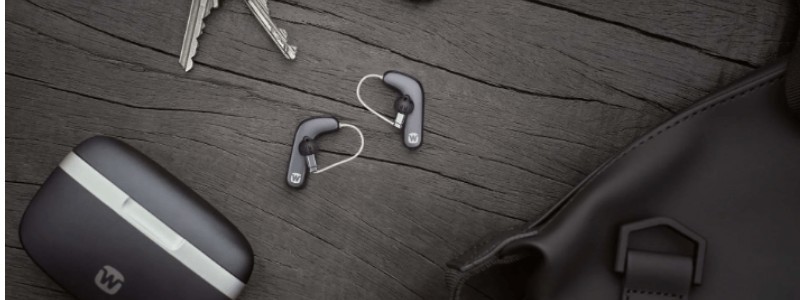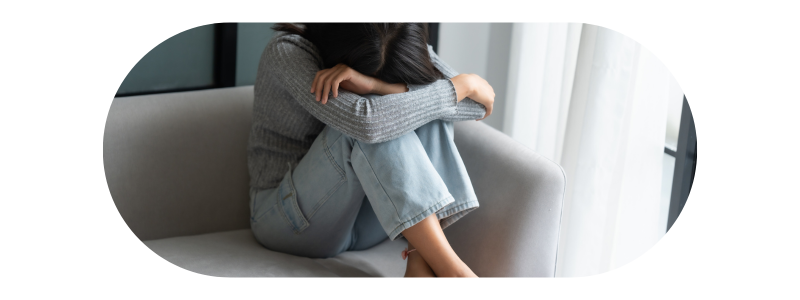
Head of Online Medical Content

Audiology Expert at Hearing Aid UK

Hearing Aids With Long Battery Life
Useful information to know
Overview | Why battery life matters | Rechargeable and disposable batteries | What affects battery life? | How to maximise battery life | Conclusion
Last Hearing Aid UK Update:
Overview
Battery life might not be the most glamorous feature when you're choosing hearing aids, but it's absolutely one of the most important.
There's nothing quite like the sinking feeling when your hearing aid dies halfway through an important conversation, or the frustration of constantly worrying whether your batteries will last through a full day out.
In this article, we briefly chat about why battery life matters, the different types of hearing aid batteries, what affects batteries, premium solutions available, who would benefit the most from a long battery life, and quick tips for making your battery last longer.
Why battery life matters more than you'd think
Most people don't think much about battery life until they've lived with hearing aids for a while. Then you discover that the "low battery" warning always seems to come at the most inconvenient moments.
Such as during a meeting, at a restaurant, or when you're nowhere near your charger or spare batteries.
Good battery life isn't just about convenience; it's about confidence and peace of mind that your hearing aids will work when you need them.
Rechargeable hearing aids
These have become increasingly popular, and for good reason. Most quality rechargeable models now offer 24-30 hours of use on a single charge, which is genuinely enough for a full day with normal use.
You pop them in the charger overnight, and they're ready to go in the morning - rather like your mobile phone but actually more reliable.
The lithium-ion batteries used in modern rechargeable aids are a world away from older rechargeable technology.
They charge faster, last longer, and don't suffer from the memory effect that plagued earlier rechargeable batteries. You can charge them partially without worrying about reducing their overall lifespan.
The downside? If you forget to charge them or the power goes out, you're stuck. And whilst the batteries typically last 4-5 years before needing replacement, when they do eventually wear out.
Then you'll need to visit your hearing care professional rather than simply buying new batteries from the chemist.
Related reading: Rechargeable hearing aids
Disposable battery models
Traditional zinc-air disposable batteries still have plenty of fans, particularly amongst people who travel frequently or simply prefer not to worry about charging. Size 13 and 312 batteries typically last 7-14 days, whilst the smaller size 10 batteries might give you 3-5 days.
The larger size 675 batteries can last up to three weeks, though these are generally used in power hearing aids for severe hearing loss.
The beauty of disposable batteries is their simplicity - carry a few spare batteries with you, and you'll never be caught out.
They're also readily available at pharmacies, supermarkets, and online. The environmental impact is worth considering, though, and the ongoing cost adds up over time.
What actually affects battery life?
Several factors influence how long your hearing aids will run, regardless of which type you choose:
Streaming drains batteries quickly: If you're streaming phone calls, music, or television directly to your hearing aids via Bluetooth, expect battery life to drop significantly - sometimes by 30-40%.
It's the single biggest drain on battery life, though frankly, the convenience of streaming is often worth it. Most modern aids manage this pretty well, but it's something to be aware of if you're a heavy streamer.
Volume and processing power: The more amplification you need and the more advanced processing features you're using, the faster your batteries will drain.
Hearing aids working harder to manage noise reduction, directional microphones, and feedback cancellation in challenging environments use more power than when you're sitting quietly at home.
Temperature and humidity: Batteries don't appreciate extreme temperatures. Very cold conditions can reduce battery life, whilst high humidity can affect performance.
If you're someone who spends a lot of time outdoors in varied weather, you might notice your batteries don't last quite as long as the manufacturer suggests.
Premium charging solutions worth considering
Modern charging cases have become rather sophisticated. Some offer:
Portable charging cases: These act as both storage and power banks, providing multiple charges without needing to plug into the wall. Brilliant for travel or long days out.
Desktop chargers: Sleeker and more convenient for home use, often with LED indicators showing charge status. Some double as dehumidifiers, which helps extend the overall life of your hearing aids.
Wireless charging options: A few manufacturers now offer Qi wireless charging, so you can plop your hearing aids on the same charging pad as your phone. It's not essential, but it's undeniably convenient.
Practical tips for maximising battery life
Regardless of which hearing aids you choose, a few habits can help extend battery life:
For rechargeable aids:
- Charge them every night, even if the battery isn't empty
- Keep the charging contacts clean with a soft, dry cloth
- Store the charger somewhere you'll remember to use it
- Consider a backup charger for travel
For disposable batteries:
- Buy batteries in bulk online - they're much cheaper than buying them individually
- Store batteries at room temperature in a dry place
- Let the battery "breathe" for a minute after removing the tab before inserting it
- Always carry spare batteries
For both types:
- Turn off your hearing aids when you're not wearing them
- Use streaming judiciously if battery life is tight
- Keep your hearing aids clean and well-maintained
- Be realistic about replacement timelines
Who really needs long battery life?
Long battery life becomes particularly important if you:
Travel frequently: Whether for business or pleasure, being abroad without reliable access to charging or replacement batteries is genuinely stressful. Long battery life gives you one less thing to worry about.
Work long hours: If you're regularly working 12+ hour days, you need hearing aids that won't give up before you do. The last thing you need is your aids dying during an important evening meeting.
Active people: If you are out and about all day, whether hiking, volunteering, or simply keeping busy, you need reliable all-day power without thinking about charging multiple times.
Have dexterity issues: Changing tiny disposable batteries can be fiddly. Rechargeable aids that last the full day mean you only need to place them in the charger once, which is much easier than fumbling with small batteries.
The environmental angle
It's worth mentioning that rechargeable hearing aids are considerably better for the environment than disposable battery models.
The average hearing aid user goes through about 200 disposable batteries per year - that's a lot of zinc-air batteries ending up in landfills. Rechargeable aids aren't perfect environmentally, but they're certainly an improvement.
Related reading: Hearing aid batteries
What about backup options?
Some people prefer a belt-and-braces approach. You might choose rechargeable aids for daily use, but keep a pair of disposable battery aids as a backup.
It's not cheap, but it provides genuine peace of mind, particularly if you're in situations where hearing is critical for safety or work.
Conclusion
Battery life should be part of your decision-making process, but it shouldn't be the only factor. A hearing aid with exceptional battery life but poor sound quality or an uncomfortable fit isn't doing you any favours.
That said, modern technology means you rarely have to compromise - many of the best hearing aids also have excellent battery life.
The sweet spot for most people is rechargeable hearing aids that provide 24+ hours of use with a reliable charging system.
If you travel extensively to places with unreliable electricity or simply prefer the flexibility of disposable batteries, modern size 312 or 13 batteries provide good life with reasonable size.
The best approach is to discuss your lifestyle and daily routine with your hearing care professional. They can recommend specific models that match both your hearing needs and your battery life requirements.
Battery anxiety shouldn't be part of your hearing aid experience, and with the right choice, it doesn't have to be.
Why Choose Us?
- FREE Hearing Tests
- Best Hearing Aids and Prices
- FREE Aftercare for Life
- FREE Home Visits
- 200+ Local Audiologists
- 60 Day Money Back Guarantee
Think you would benefit from longer battery life?
We can support you locally
Ready to find hearing aids with battery life that actually works for your lifestyle? Speak with a qualified hearing care professional who can assess your needs and recommend models that'll keep up with your busy days.
They can arrange trials of both rechargeable and disposable battery options so you can experience the difference firsthand before making your decision.
Other hearing loss awareness articles you might like...
 Tips for hearing in restaurants
Tips for hearing in restaurants  The impact of hearing loss and relationships
The impact of hearing loss and relationships  Hearing Loss and Mental Health
Hearing Loss and Mental Health Our specialist service includes:
Do not spend hundreds of pounds without getting a second opinion from us.
Please call us on 0800 567 7621
 Not only are the prices great, but the service is fantastic! Many thanks to your team.
Not only are the prices great, but the service is fantastic! Many thanks to your team.What's included in our hearing aid prices?
FAQs
In general, any audiologist will always recommend to you the hearing aid model that best suits your needs. Here is a useful checklist to make sure that is the case.
- Audiologist's level of knowledge: The audiologist you have seen will hopefully have a wide knowledge of all available hearing aids; however, some will only be familiar with a small number of brands and, therefore, may not really be in a position to know which model is the best for you. It is OK to challenge their recommendation and ask them to justify why this particular brand is the one for you.
- Do research: Read about the hearing aid that was recommended. Does it seem like it will suit your lifestyle? Does it have more or fewer features than you need?
- Be aware of sales targets: Many high street retailers have specific tie-ins to a particular manufacturer/brand. The hearing aid they have suggested may still be the correct one for you, but do your research so that you know why they might have recommended it.
If you have significant hearing loss in both ears, you should be wearing two hearing aids. Here are the audiological reasons why:
Localisation: The brain decodes information from both ears and compares and contrasts them. By analysing the minuscule time delays as well as the difference in the loudness of each sound reaching the ears, the person is able to accurately locate a sound source.
Simply put, if you have better hearing on one side than the other, you can't accurately tell what direction sounds are coming from.
Less amplification is required: A phenomenon known as “binaural summation” means that the hearing aids can be set at a lower and more natural volume setting than if you wore only one hearing aid.
Head shadow effect: High frequencies, the part of your hearing that gives clarity and meaning to speech sounds, cannot bend around your head. Only low frequencies can. Therefore, if someone is talking on your unaided side, you are likely to hear that they are speaking, but be unable to tell what they have said.
Noise reduction: The brain has its own built-in noise reduction, which is only really effective when it is receiving information from both ears. If only one ear is aided, even with the best hearing aid in the world, it will be difficult for you to hear in background noise as your brain is trying to retain all of the sounds (including background noise) rather than filtering them out.
Sound quality: We are designed to hear in stereo. Only hearing from one side sounds a lot less natural to us.
Fancy some further reading on this topic? You can read about why two hearing aids are better than one in our article, hearing aids for Both Ears, here
For most people, the main benefit of a rechargeable hearing aid is simple convenience. We are used to plugging in our phones and other devices overnight for them to charge up. Here are some other pros and cons:
For anybody with poor dexterity or issues with their fingers, having a rechargeable aid makes a huge difference, as normal hearing aid batteries are quite small and some people find them fiddly to change.
One downside is that if you forget to charge your hearing aid, then it is a problem that can't be instantly fixed. For most, a 30-minute charge will get you at least two or three hours of hearing, but if you are the type of person who is likely to forget to plug them in regularly, then you're probably better off with standard batteries.
Rechargeable aids are also a little bit bigger and are only available in Behind-the-Ear models.
Finally, just like with a mobile phone, the amount of charge you get on day one is not going to be the same as you get a few years down the line. Be sure to ask what the policy is with the manufacturer's warranty when it comes to replacing the battery.
For most people, the answer is yes. But it's never that simple.
The majority of hearing problems affect the high frequencies a lot more than the low ones. Therefore, open fitting hearing aids sound a lot more natural and ones that block your ears up can make your own voice sound like you are talking with your head in a bucket. Therefore, in-ear aids tend to be less natural.
However, the true answer is we can't tell until we have had a look in your ears to assess the size of your ear canal, and until we have tested your hearing to see which frequencies are being affected.
People with wider ear canals tend to have more flexibility, also there are open fitting modular CIC hearing aids now that do not block your ears.
There is also the age-old rule to consider, that a hearing aid will not help you if it's sat in the drawer gathering dust. If the only hearing aid you would be happy wearing is one that people can't see, then that's what you should get.
Most people can adapt to any type of hearing aid, as long as they know what to expect. Have an honest conversation with your audiologist as to what your needs are.
Generally speaking, six or more. Unless it's none at all. The number of channels a hearing aid has is often a simplistic way an audiologist will use to explain why one hearing aid is better than another, but channels are complex, and it is really not that straightforward. Here are some reasons why:
Hearing aids amplify sounds of different frequencies by different amounts. Most people have lost more high frequencies than low, and therefore need more amplification in the high frequencies. The range of sounds you hear is split into frequency bands or channels, and the hearing aids are set to provide the right amount of hearing at each frequency level.
Less than six channels, and this cannot be done with much accuracy, so six is the magic number. However, a six-channel aid is typically very basic with few other features and is suitable only for hearing a single speaker in a quiet room. The number of channels is not what you should be looking at; it's more the rest of the technology that comes with them.
As a final note, different manufacturers have different approaches. One method is not necessarily better than any other. For example, some manufacturers have as many as 64 channels in their top aids. Most tend to have between 17 and 20. One manufacturer has no channels at all.
Manufacturer's warranties typically last between 2-5 years, depending on the brand and model, and cover defects in materials and workmanship. This includes repairs for component failures, electronic malfunctions, and manufacturing defects, but excludes damage from misuse, accidents, or normal wear. Most manufacturers also include loss and damage insurance for the first year.
We handle all warranty claims on your behalf, liaising with manufacturers and ensuring you get replacement devices quickly when needed. This comprehensive warranty coverage, combined with our lifetime aftercare, gives you complete peace of mind.
Our hearing tests are completely free, whether at our clinics or in your home. Unlike other providers who charge £30-£100 for home visits, we believe hearing healthcare should be accessible without financial barriers. Our comprehensive assessments include examination by a registered audiologist, audiogram results, and personalised recommendations.
All testing, future adjustments, and ongoing support are included at no extra cost. While NHS tests are also free, typical 6-week waiting periods often lead people to seek immediate private testing. We provide prompt, professional assessments that fit your schedule and budget.
Yes, we offer completely free home visits throughout the UK, and this service is included in our prices with no additional charges. Home visits are particularly valuable for people with mobility issues, busy schedules, or those who simply prefer the comfort and convenience of their own environment.
Our audiologists can conduct full hearing tests, fit hearing aids, and provide ongoing support in your home. This service sets us apart from many providers who either don't offer home visits or charge extra for them.
We can offer prices up to 40% lower than high street retailers because of our business model. As a network of 200+ independent audiologists, we don't have the massive overheads of large retail chains - no expensive high street premises, no sales targets pushing audiologists to sell the most expensive options, and no costly marketing campaigns.
However, we maintain the same buying power as the big chains because we purchase on behalf of our entire nationwide network. This means you get access to the same premium hearing aids with professional service, but at genuinely competitive prices.
We offer a comprehensive 60-day money-back guarantee, which gives you twice the industry standard time to properly assess whether your hearing aids are right for you. This extended period recognises that adjusting to hearing aids takes time, and your brain needs several weeks to adapt to the amplified sounds.
Unlike many providers who offer just 30 days, we believe 60 days gives you the confidence to test your hearing aids in all the situations that matter to you - from quiet conversations at home to busy restaurants and outdoor activities.
Other pages you might find useful
Ask the Experts
6 Morton Lane
Walkwood
Redditch
Worcestershire
B97 5QA
Latest Launch
When we refer to a product as 'Latest Launch', we mean it is the latest to be released on the market.
New
When we refer to a product as 'New', we mean that the product is the newest hearing aid model on the market.
When we refer to a product as 'Superseded', we mean that there is a newer range available which replaces and improves on this product.
Older Model
When we refer to a product as an 'Older Model', we mean that it is has been superseded by at least two more recent hearing aid ranges.
